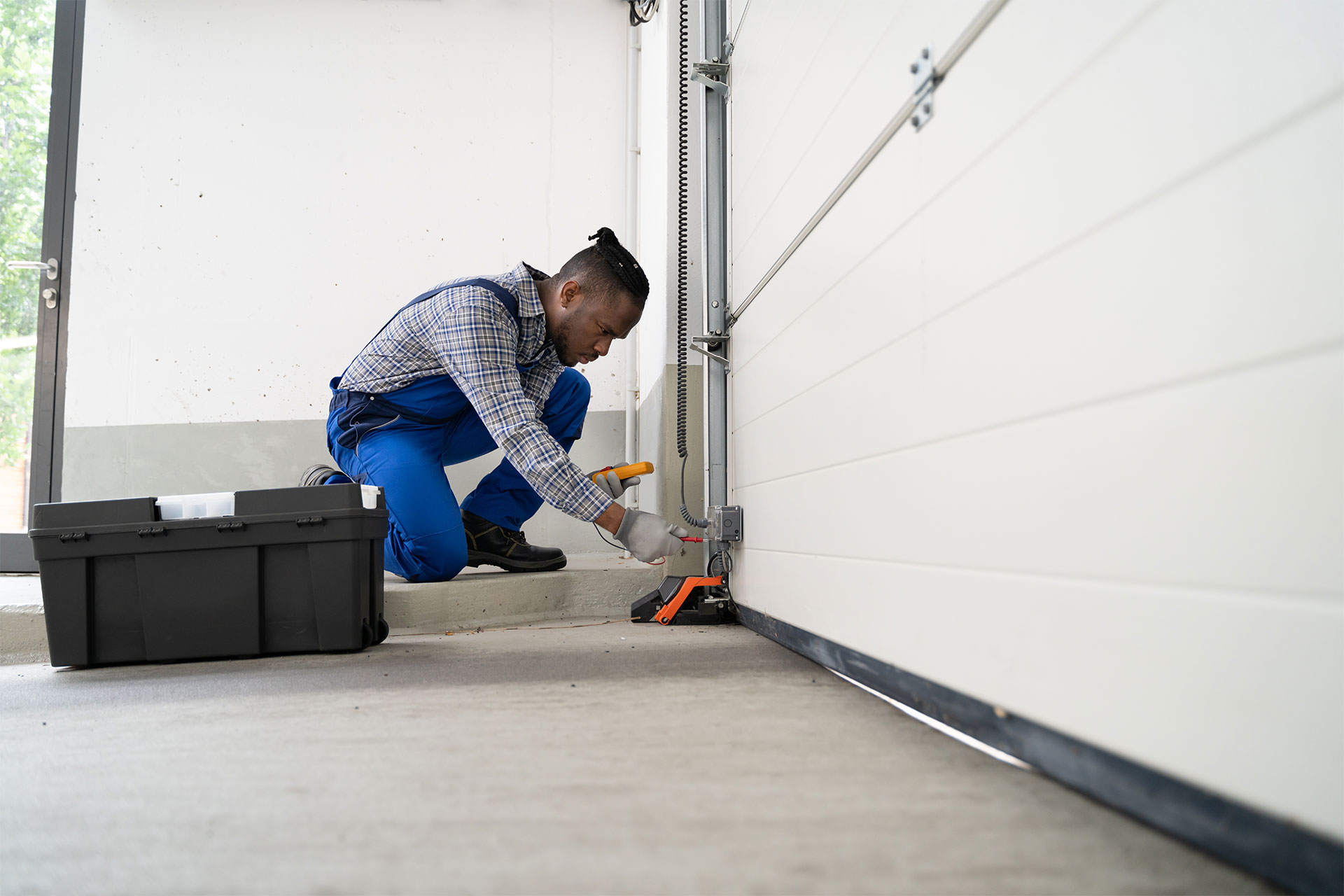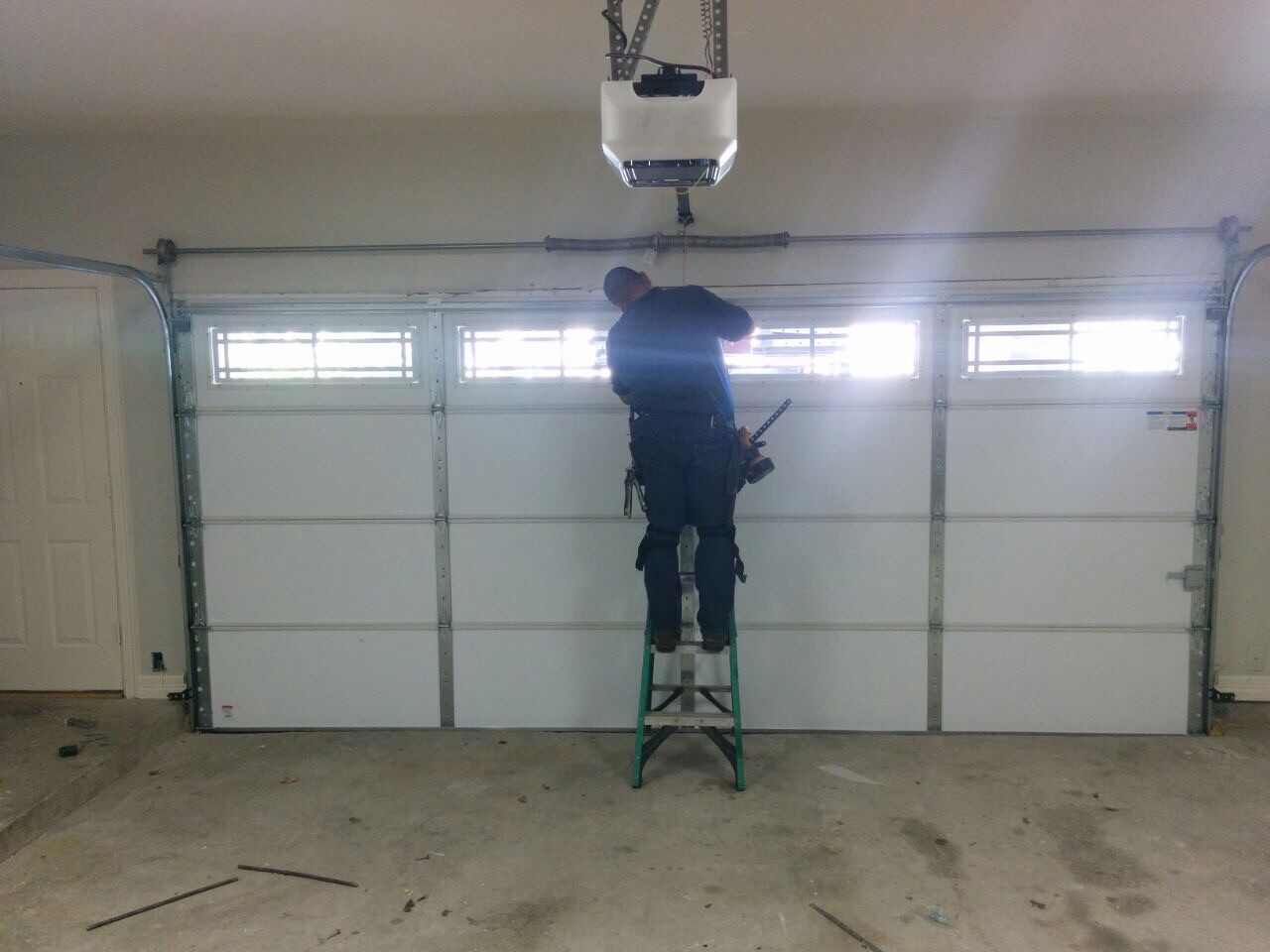Just How to Fix Minor Garage Door Issues Before Calling a Pro
Prior to connecting to a specialist for small garage door issues, it is sensible to perform a preliminary evaluation of common issues. Simple steps, such as inspecting the power supply and checking the push-button control, can frequently lead to prompt resolutions. An assessment of safety and security sensing units and lubrication of moving components may considerably enhance performance. Recognizing the subtleties of these parts can conserve both time and cost, yet several home owners overlook these fundamental checks. Subsequently, one may wonder what details activities can bring about the most effective repairing end results.
Identifying Common Garage Door Troubles
A garage door is a crucial part of home safety and security and ease, yet it can come across various problems over time. Understanding typical problems can aid property owners in troubleshooting prior to looking for professional help.
One widespread problem is the door stopping working to open up or shut effectively. This can show up as a door that quits midway or one that opens up just partly. Such habits might stem from misaligned tracks or obstructed sensing units. An additional regular trouble is uncommon sounds during procedure, which may indicate worn-out rollers or a failing opener motor.

One more common concern is the door's failure to stay closed, which might be connected to damaged limit setups or problems with the photo-eye sensing units. Routine upkeep checks can help stop these problems, ensuring smooth operation and extending the lifespan of the garage door system. Recognizing these usual problems is the very first step in effective troubleshooting, promoting an aggressive approach to garage door treatment.
Monitoring Power Supply and Links
Making certain a trusted power supply is essential for the correct performance of a garage door system. Begin by examining if the garage door opener is plugged into a working electric outlet.

Lastly, validate that the links from the opener to the power supply are safe and secure and free of rust. Corroded or loose links can interfere with power circulation. By methodically inspecting these components, you can often determine and rectify small power supply problems, guaranteeing your garage door runs efficiently without requiring professional support.
Examining the Remote
Push-button controls are vital parts of modern garage door systems, supplying comfort and ease of accessibility. When experiencing concerns with your garage door, checking the remote control is a vital initial action. Begin by examining the batteries; dead or weak batteries are the most usual wrongdoers behind malfunctioning remotes. Replace the batteries with fresh ones, guaranteeing they are set up appropriately according to the polarity markings.

In addition, guarantee that the remote is within range of the garage door opener. If multiple remotes are being top article utilized, examination each one to identify whether the concern lies with a details remote.
Examining the Security Sensing Units
After resolving potential concerns with the push-button control, the following step involves examining the security sensors. These sensors are important components designed to protect against accidents by detecting obstructions in the garage door's course. Generally found on either side of the garage door, they send out an invisible light beam; if this beam of light is disrupted, the door halts or reverses its movement.
Begin your assessment by guaranteeing that the sensing units are aligned properly. Imbalance is an usual concern and can usually be rectified by gently repositioning them until the indication lights on each sensing unit light up regularly. Dust and particles can also impede their effectiveness. Clean the sensing unit lenses with a soft cloth to eliminate any obstructions that may hinder the signal.

Next, look for any type of noticeable damages to the electrical wiring or the sensors themselves. Frayed cables or cracked sensing units might require substitute. Furthermore, make sure that the sensors are safely installed and not loosened, as this can impact their performance. Examination the garage door's operation after making any kind of changes to verify that the sensing units are functioning properly. Getting in touch with a professional might be warranted. if concerns linger.
Lubricating Relocating Components
Smooth operation is vital for the durability and performance of your garage door system, making normal lubrication of moving parts a vital upkeep task. Over time, elements such as rollers, tracks, and joints can collect dust and particles, bring about friction and wear. This can lead to noisy procedure, slow-moving activity, or also mechanical failing.
To effectively oil your garage read more door, begin by choosing a premium lubricating substance specifically designed for garage doors, such as silicone spray pop over to this site or lithium grease. Stay clear of making use of WD-40, as it can bring in dirt and crud. Beginning by cleaning the components to remove any type of dust build-up. After that, apply the lube to the relocating components, including the rollers, joints, and tracks. Make certain that the lubricating substance penetrates the systems yet prevent over-saturation, which can result in drips and mess.
After lubrication, by hand operate the door a couple of times to disperse the lubricating substance equally and evaluate the level of smoothness of operation (Garage Door Repair Victor). Regular lubrication, preferably every 6 months, not just improves efficiency but likewise extends the life of your garage door system. By integrating this simple maintenance job, you can prevent prospective concerns and make certain reliable performance for several years to come
Verdict
To conclude, attending to small garage door issues individually can be attained through systematic troubleshooting. By identifying common issues, examining the power supply and connections, inspecting the remote, analyzing safety sensing units, and oiling moving parts, numerous issues can be solved without specialist assistance. Regular upkeep not just makes sure the appropriate functioning of the garage door yet likewise expands its life-span, inevitably resulting in enhanced safety and benefit for customers.
Before getting to out to a specialist for small garage door problems, it is sensible to conduct an initial assessment of common troubles. By methodically examining these components, you can usually identify and fix minor power supply issues, guaranteeing your garage door runs efficiently without requiring expert assistance.
When experiencing issues with your garage door, checking the remote control is a vital very first action. Usually situated on either side of the garage door, they discharge an invisible light beam; if this light beam is cut off, the door stops or reverses its motion.
To successfully oil your garage door, begin by picking a premium lube especially designed for garage doors, such as silicone spray or lithium oil.